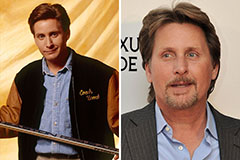The WWF Champion Belts hold a one-of-a-kind and fabled location in the annals of specialist wrestling. Greater than mere devices, these substantial signs of triumph represent the peak of success, the end result of blood, sweat, and tears shed within the squared circle. For years, the sight of a wrestler hoisting a dazzling WWF (later copyright) championship belt over their head has actually been an famous picture, promptly identifiable even to those with just a passing familiarity with the sport. These belts are not just prizes; they are physical symptoms of stories, traditions, and the ever-evolving landscape of expert wrestling.
The history of WWF Champion Belts is as rich and vibrant as the firm itself. From the very early days of the Globe Wide Fumbling Federation (WWWF) and its inaugural champion, the lineage of these titles informs a engaging narrative of wrestling's development and transformation. The initial WWWF Championship, held by the legendary Buddy Rogers, was a fairly basic style, a far cry from the intricate and often personalized belts these days. Yet, it laid the structure for a practice of symbolic hardware that would pertain to define battling excellence.
As the WWWF transitioned into the WWF under Vince McMahon Sr. and later on his kid, Vince K. McMahon Jr., the championship belts evolved in tandem with the firm's blossoming popularity. The " Huge Eagle" belt, synonymous with the Hulkamania period, became an immediately well-known symbol of fumbling's mainstream development in the 1980s. Its big, impressive eagle layout, frequently draped over the wide shoulders of Hunk Hogan, epitomized the epic individualities and growing popularity of the moment. This period sealed the championship belt as a vital narration device, a graph of prominence and the utmost reward that every wrestler desired attain.
The 1990s ushered in a new age for the WWF, marked by a change in wrestling design and the development of new superstars. This period likewise saw the introduction of brand-new WWF Championship Belts, reflecting the transforming visual and the personalities holding them. The "Winged Eagle" belt, with its more elaborate layout including several plates and a popular winged eagle, ended up being the symbol of champs like Bret Hart, Shawn Michaels, and Rock Cold Steve Austin. This design is commonly considered among one of the most renowned and beloved in battling history, standing for a golden era for the business and its top title.
The Perspective Age, a duration of edgier stories and defiant personalities, brought with it even more advancement in the design of the WWF Champion Belts. While the "Winged Eagle" stayed temporarily, the appearance of the " Cigarette smoking Skull" belt, specifically made for Rock Cold Steve Austin, marked a separation from custom. This distinct belt, including a skull with smoke originating from its eye sockets, underscored the rebellious and anti-establishment personality of one of wrestling's largest stars. It demonstrated the company's willingness to personalize the championship to fit the character, additional boosting the narration potential of the title.
The turn of the millennium and the eventual rebranding of the WWF to copyright saw better models of the championship belts. The "Undisputed Championship" era, complying with the purchase of copyright, introduced a new style that unified the WWF and copyright World Heavyweight Championships. This belt, while originally standing for a marriage, at some point gave way to the "Spinner" belt, notoriously connected with John Cena. This controversial style, including a huge copyright logo that can rotate, was both admired and criticized for its showy and unusual look. Despite point of view, it became identified with Cena's leading power and the age he defined.
Past the major world championship, the WWF Champion Belts encompass a series of titles, each standing for a different degree of achievement and field of expertise within the business. The Intercontinental Championship, commonly taken into consideration the "workhorse" title, has a long and prestigious history, held by numerous future world champs. 1 Its different designs for many years have shown its significance as a stepping rock to the main event. Likewise, the United States Champion ( originally a copyright title brought over after the procurement), the Tag Team Championships (with their numerous and commonly visually distinctive layouts standing for the unity of a team), the Women's Championships ( developing via various designs showing the growing importance of women's fumbling), and the numerous "hardcore" and "European" titles ( however now defunct) all contribute to the abundant tapestry of WWF/copyright champion history.
1.
The distinguished background of the Intercontinental Championship: copyright, Aug. 12, 2022.
www.youtube.com.
The layout and construction of WWF Championship Belts are substantial elements of their allure. Usually crafted from metal plates ( generally zinc or brass) and natural leather bands, these belts are substantial signs of status and workmanship. The elaborate detailing on home plates, featuring company logo designs, eagles, worlds, and various other symbolic images, contributes to their aesthetic allure and historic importance. The weight and feel of a champion belt are commonly defined by wrestlers as including in the sense of achievement and legitimacy related to holding it.
The legacy of WWF Champion Belts prolongs much past the fumbling ring. They have actually become cultural symbols, showing up in movies, tv programs, and computer game. Replicas of these belts are very searched for by followers, acting as substantial reminders of their favored wrestlers and unforgettable eras. The image of a wwf championship belts champion proudly displaying their belt is deeply ingrained in popular culture, standing for triumph and achievement in a broader feeling.
Finally, the WWF Championship Belts are much more than simply attractive accessories. They are powerful icons of battling history, standing for the accomplishments and adversities of plenty of athletes that have strived for greatness within the made even circle. From the simple designs of the very early days to the elaborate and tailored belts of the modern age, these titles have actually advanced alongside the company, showing its changing landscape and the larger-than-life individualities that have actually held them. The tradition of these belts continues to endure, exciting followers and strengthening their location as iconic icons of professional wrestling quality.
 Emilio Estevez Then & Now!
Emilio Estevez Then & Now! Taran Noah Smith Then & Now!
Taran Noah Smith Then & Now! Ariana Richards Then & Now!
Ariana Richards Then & Now! Patrick Renna Then & Now!
Patrick Renna Then & Now! Katey Sagal Then & Now!
Katey Sagal Then & Now!